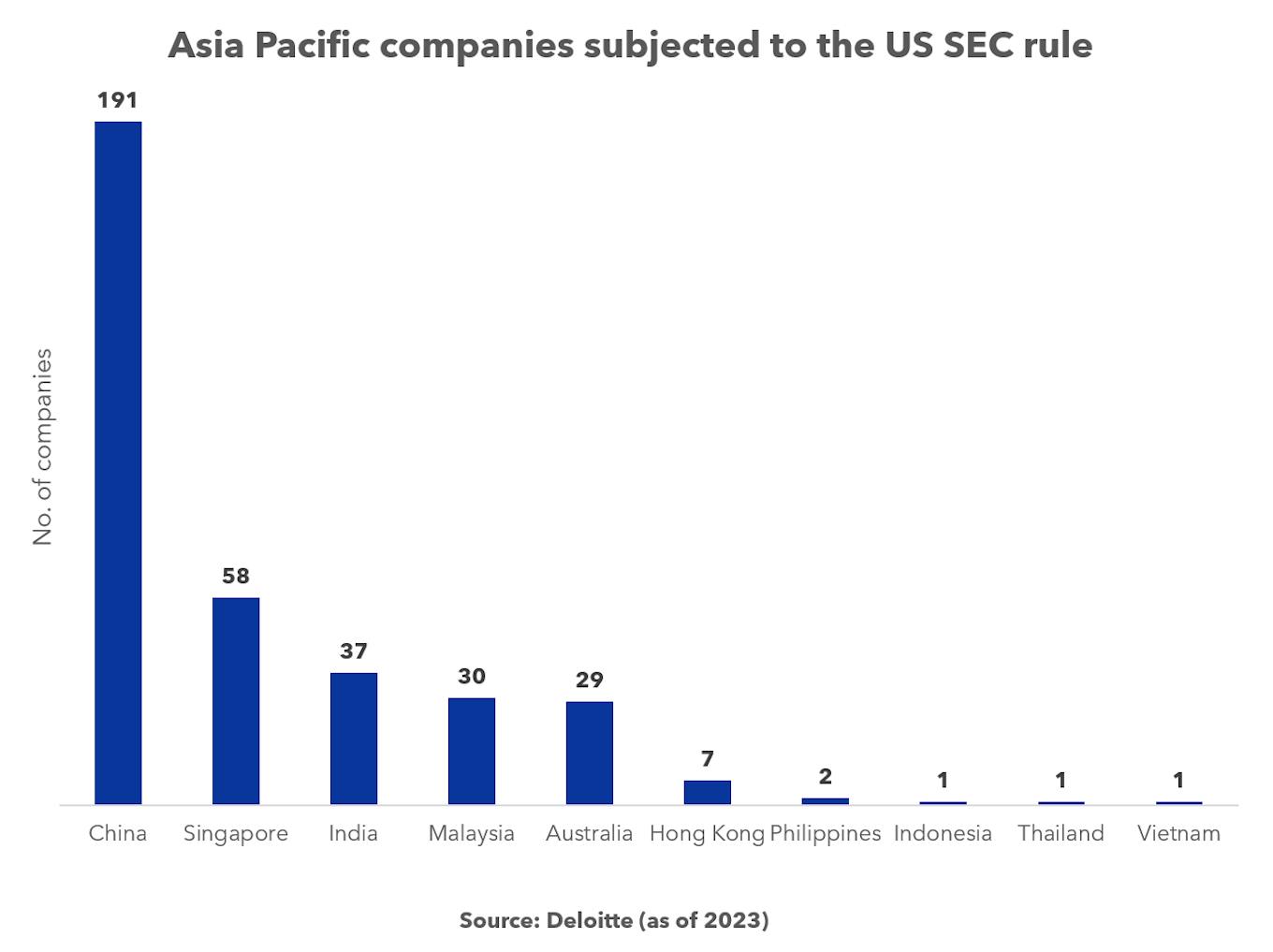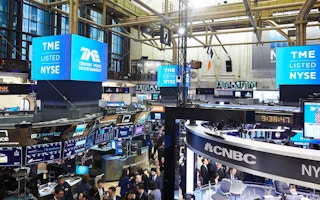Nearly 400 Asia Pacific companies will be required to disclose their climate risks as early as 2025 under the new United States Securities and Exchange Commission (US SEC) rule, which was passed on Wednesday.
To continue reading, subscribe to Eco‑Business.
There's something for everyone. We offer a range of subscription plans.
- Access our stories and receive our Insights Weekly newsletter with the free EB Member plan.
- Unlock unlimited access to our content and archive with EB Circle.
- Publish your content with EB Premium.
Based on data from audit and consulting giant Deloitte, most of these affected Asian companies are from jurisdictions that have either proposed or mandated climate reporting for listed companies.
The SEC rule deviates from international standards in its exclusion of Scope 3 emissions, or supply chain emissions that typically represent the bulk of a company’s total carbon footprint.
This initially mooted requirement in the 2022 draft rule was dropped after pushback from lobby groups and Republican officials, who argued that it would constitute overreach. While the original proposal would have applied to all publicly listed companies, the final rule only requires larger companies to do so.

The bulk of Asian companies who will be subjected to the United States’ new climate reporting rule come from China, Singapore and India. Image: Gabrielle See/Eco-Business
In addition to disclosing Scope 3 emissions, the International Sustainability Standards Board (ISSB)’s framework – which many countries in this region like Australia, Malaysia and Singapore have chosen to align their mandatory reporting standards with – requires big emitters to conduct climate scenario analysis to assess the resilience of their business strategies and to disclose the link between their sustainability targets and executive pay.
These largely align with the European Union’s reporting rules, which over 2,000 Asian companies are estimated to be subjected to from 2028. Unlike the latest SEC rule and ISSB standards, the EU directive uses a “double materiality” approach, which assesses the risks from both financial and non-financial factors.
Taken alongside other reporting requirements that have been rolled out of late, the SEC rule signals that “climate disclosure is here to stay,” said Eu-Lin Fang, sustainability and climate change leader at PwC Singapore in a LinkedIn post.
Under the SEC rule, companies will need to start reporting their Scope 1 and Scope 2 emissions, or direct and indirect emissions, from 2026. By 2029, the first batch of firms will need to obtain limited assurance – baseline accuracy checks provided by an independent auditor – on these reported emissions, before moving to a more rigorous level of reasonable assurance four years after.
Companies will also need to report how many carbon offsets and renewable energy certificates (RECs) they use to achieve their climate targets, including how much they cost to purchase.
Within hours of being passed, the SEC rule faced its first lawsuit from 10 Republican-led states. Environmental groups, like the Sierra Club, are also considering suing the top US regulator for not going far enough to protect investors.
These political and legal challenges are expected to continue, meaning there will be uncertainty around this new rule in the near future, said Terence Jeyaretnam, a Melbourne-based partner in the Climate Change and Sustainability practice at accounting firm EY.
In contrast, the direction of travel is much clearer in the Asia Pacific region as more jurisdictions move towards mandatory Scope 3 and other climate-related disclosures, said Jeyaretnam. “Investors and consumers who understand the value of climate and sustainability disclosures now have another incentive to look to companies listed in Australia, New Zealand, Hong Kong, China, Japan or Singapore,” he said.
“Coupled with Asia Pacific’s importance in manufacturing and global supply chains, [this] means that the data, know-how and expertise required to understand companies’ climate and sustainability impacts will continue to accumulate in Asia, making the region both competitive and progressive on environmental, social and governance (ESG) disclosures.”










